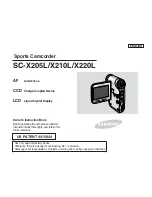
9
Adverse weather conditions
9.1
Built-in heaters
ThermoVision™ Sentinel is designed and manufactured to meet strict specifications
and can be used under the most demanding weather conditions that may occur in
field situations. Apart from the protection by design – such as sealings and encapsu-
lation — a number of built-in heaters automatically turn on at start-up in cold temper-
atures to protect the electronics and to defrost the lens. The heating of the camera
may take up to 30 minutes and is indicated by the
HEATER ON
indicator lamp on the
Power Box (see Figure 3.5 on page 6).
NOTE: The system does not start until it is heated to the factory preset temperature level.
9.2
Precautions under cold weather conditions
Despite the steps that have been taken to secure the operation of the imager under
cold weather conditions – such as heavy snowfall or freezing rain – situations may
arise where the imager unit is exposed to ice and snow build-up. In such situations
it is strongly advised that the operator checks the imager unit on a regular basis.
■
Clear the imager housing from ice and snow. Make sure the ventilation slots on
the rear side of the housing are not obstructed.
■
Clear the area in front of the lens from ice and snow. If the lens needs cleaning,
follow the instructions in the section 10 – Maintenance & cleaning on page 29
■
Check all connectors and make sure the locking rings are secured. Clear the con-
nectors from ice and snow.
■
Check all cables and clear the cables from ice and snow.
28
Publ. No. 1 557 544 Rev. a121 – ENGLISH (EN) – October 6, 2005
















































